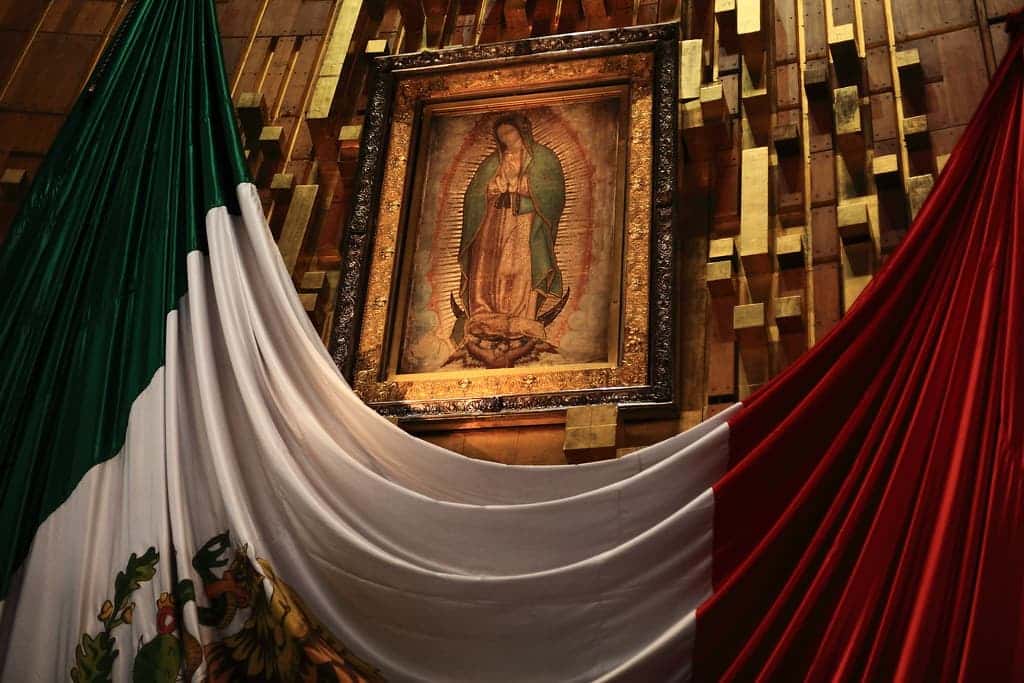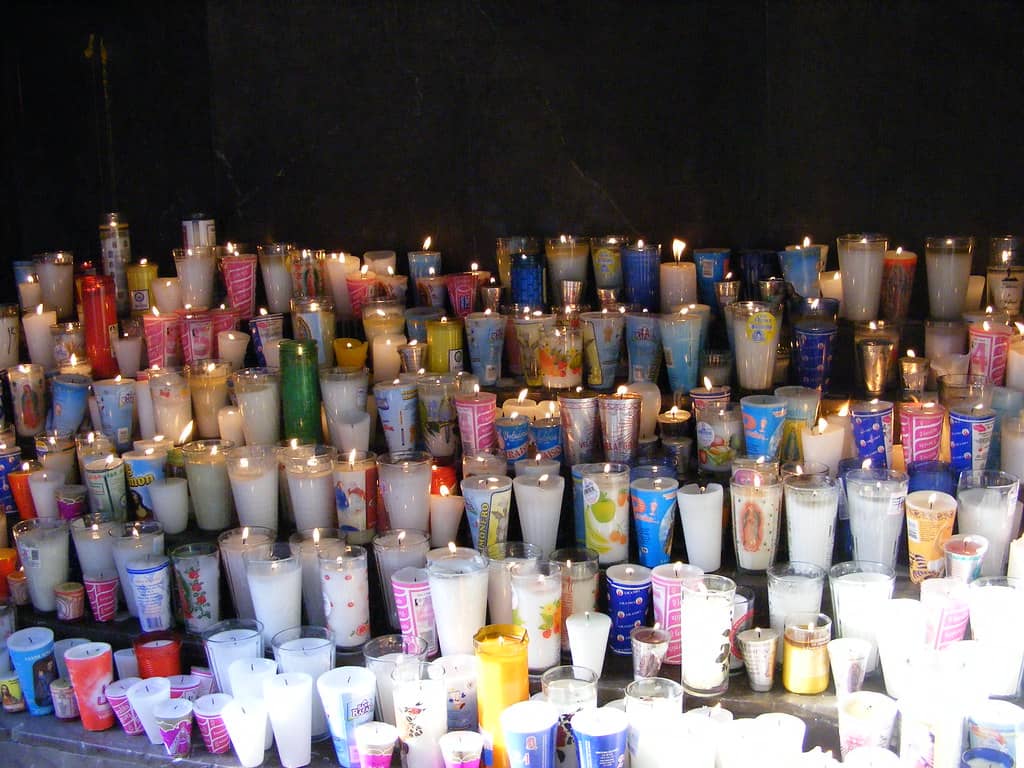
Throughout history, pilgrimages have been a manifestation of faith, sacrifice, and the search for transcendence. Two of the most iconic routes, though separated by oceans and different cultures, are the pilgrimage to the Basilica of Guadalupe in Mexico and the Camino de Santiago in Europe.
Both, although different in their details, share a common essence: they offer pilgrims a unique opportunity to reconnect with their faith, with themselves, and with the spirituality that permeates the routes.
In this article, we will explore both routes, focusing primarily on the importance of the pilgrimage to the Basilica of Guadalupe. If you are interested in undertaking Camino de Santiago trips, we invite you to explore other articles on our website/blog. This text is intended to focus on the pilgrimage to Guadalupe.
Índice de contenidos
The Basilica of Guadalupe: A place of faith and universal devotion
Historical origins and religious significance
The Basilica of Guadalupe is located on the hill of Tepeyac, in Mexico City.
Its origin dates back to 1531, when, according to tradition, the Virgin Mary appeared to the indigenous Juan Diego Cuauhtlatoatzin at this site. The Virgin requested that a temple be built in her honour. As proof of her appearance, the Virgin left her image imprinted on the pilgrim’s cloak, an event that was considered miraculous by the people of that time.
Since then, the Virgin of Guadalupe has been a symbol of unity, faith, and hope for millions of people. The construction of a small chapel on Tepeyac eventually gave rise to the imposing Basilica we see today. It is now one of the most visited sanctuaries in the world, receiving over 20 million pilgrims each year.
The symbolism of the Virgin of Guadalupe

The Virgin of Guadalupe is more than a religious figure: she is a national and cultural symbol. She represents the union of indigenous and Christian traditions, as her appearances occurred during a time of colonisation, when native populations sought identity and comfort amid the conquest.
Her image, depicting a dark-skinned woman dressed in a starry mantle, is seen as a protector and spiritual mother to the faithful.
The message of the Virgin has transcended borders and ages. In Mexico, her image is commonly seen in homes, businesses, and at important events. Many believers attribute miracles and healings to her intervention, which further strengthens devotion to her figure.
The pilgrimage route to the Basilica
There are several routes that pilgrims take to reach the Basilica of Guadalupe. From cities such as Puebla, Querétaro, Toluca and other parts of Mexico, thousands of faithful walk for days or even weeks, with the aim of reaching the sanctuary on key dates. Most notably, on 12th December, the Feast of Our Lady of Guadalupe.
Pilgrims typically travel in groups, organising camps along the way. During the journey, prayers, songs, and rituals become an essential part of the experience. Along these routes, many locals offer food, water, and support to the walkers, demonstrating the hospitality and solidarity that characterise this tradition.
Upon reaching the Basilica, pilgrims engage in various religious activities: some attend Mass, others present floral offerings, candles or images of the Virgin. For many, the arrival signifies the fulfilment of a promise or gratitude for a miracle received.
Spiritual elements shared with the Camino de Santiago
Although the pilgrimages to the Basilica of Guadalupe and the Camino de Santiago take place in different geographical and cultural contexts, they share profound spiritual elements. In both cases, the pilgrims embark on a journey that transcends the physical, becoming an experience of inner transformation.
On the Camino de Santiago, walkers cover hundreds of kilometres across different routes in Spain, such as theCamino de Santiago from Ourense or theCamino Primitivo from Lugo. Just like in Guadalupe, it is a test of endurance, where walkers face fatigue, adverse weather conditions, and emotional challenges.
Both routes strengthen the pilgrim’s spirituality, helping them to reflect on their life, their values, and their purpose.
The pilgrim’s experience in Guadalupe

Preparations and recommendations
Before embarking on a pilgrimage to the Basilica of Guadalupe, it is important to make certain preparations.
Pilgrims should bring comfortable clothing, appropriate footwear for long walks, water, light food, and, in many cases, devotional items such as rosaries or images of the Virgin. It is also advisable to plan the routes and rest stops, especially for those covering long distances.
Additionally, it is essential to prepare the spirit, as the journey is not just a physical challenge, but also an opportunity to deepen one’s faith and engage in introspection.
Rituals Upon Reaching the Sanctuary
Upon reaching the Basilica, pilgrims are immersed in an atmosphere of intense devotion. Many participate in Mass, while others join processions or sing hymns in honour of the Virgin. One of the most moving sights is that of the faithful who crawl the last stretch on their knees, as a sign of sacrifice and gratitude.
This moment is highly emotional, as it symbolises the culmination of a journey of faith and perseverance.
Notable Events Throughout the Year
The most important event at the Basilica of Guadalupe is on 12th December, when the anniversary of the Virgin’s apparition is celebrated. This festivity attracts millions of people, who participate in solemn Masses, traditional dances, and cultural events. The Basilica fills with lights, music, and prayers, creating an atmosphere of profound spiritual communion.
Other significant dates include Holy Week and All Saints’ Day, when special ceremonies are also organised.
Connections Between the Pilgrims of Guadalupe and Those of the Camino de Santiago
There are testimonies from individuals who have undertaken both pilgrimages, describing similar transformative experiences. On both routes, pilgrims find a deep connection with their faith and the meaning of life.
If you would like to explore more about the Camino de Santiago, we suggest discovering the route from Irún to Bilbao on the Camino de Santiago.
The pilgrimages to the Basilica of Guadalupe and the Camino de Santiago teach us that faith is a powerful force capable of uniting people from different cultures. Through these paths, pilgrims not only seek spiritual answers, but also a connection with the divine and with themselves.
Explore these sacred routes and experience something that could change your perspective forever.









